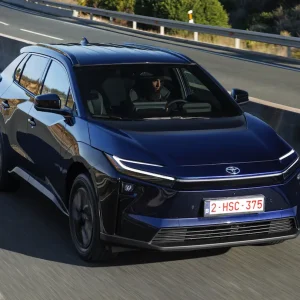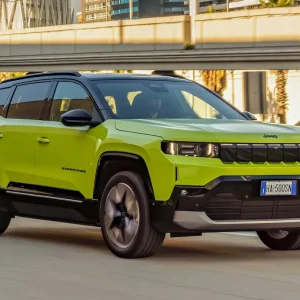Audi has been rolling out plug-in hybrid powertrains fairly regularly across its model range for a couple of years now, and the latest model to get the electrified treatment is the Q3 medium SUV. The new variant, badged TFSI e, features a 150hp petrol engine paired with a 114hp electric motor, for a combined maximum output of 245hp, while a 13.0kWh battery allows an electric driving range of. well, actually it depends. With the entry-level Technik equipment grade, you get an official range of 31 miles on the battery alone, which in turn means the Q3 incurs an 11% company car tax BIK rate. However, differences in spec mean the rest of the range, including the higher-end Black Edition car tested here, can manage only 28 miles, and so fall into the 13% band. Of course, this still represents superb value for drivers compared with any conventionally powered SUV, however, it must be said that all versions of the rival BMW X1 and Mercedes-Benz GLA PHEVs sit in the 11% band.
On the road the Q3’s PHEV system is easy to use. It defaults to EV-only mode on start-up and will happily cruise up to motorway speeds like that, and then, in addition to the auto mode, which lets the car figure out for itself which propulsion method is best at any given time, there’s also the option of battery hold and charge modes, should you want to retain or increase battery level without plugging in, for instance, if you’re driving towards an inner-city area where zero-tailpipe emission motoring seems especially appropriate.
Although 245hp PHEV powertrains have been used elsewhere in the VW Group to power hot hatches, you wouldn’t expect an SUV to replicate the driving pleasure of those models, but the Q3 makes a decent enough stab at it – there’s an enjoyable flowing quality to the handling and body movement is very well controlled, while accurate steering makes the car easy to place on the road. Despite the extra weight of an SUV, acceleration is also usefully rapid.
Still, you’d probably expect this car to be most at home as a comfortable cruiser, and this is borne out by good ride quality, especially at speed, and impressive refinement, with the petrol engine hushed even when it’s needed to augment the largely silent (save for a tone emitted for pedestrian safety reasons at low speeds) electric motor.
The current-generation Q3 was first introduced in 2019, but the interior isn’t exactly ageing badly. Alongside the still-impressive Audi Virtual Cockpit display, the graphically pin-sharp and highly responsive central touchscreen is a joy to use, while the physical ventilation controls sitting beneath it are a welcome sight. However, given that our Black Edition test car is towards the higher end of the Q3 range, there are some slightly disappointing omissions from the standard equipment list, such as electric seat adjustment and adaptive cruise control. It’s also surprising, especially in a PHEV, to still find an old-fashioned key-in-ignition starting procedure rather than a starter button.
As is often the case with PHEVs, the introduction of a battery beneath the boot floor means a reduction in luggage space, and in the case of the Q3, this is down from 530 litres to 380 – a fair bit behind the BMW X1 and Mercedes GLA PHEVs at 450 and 445 litres respectively, although the Q3’s boot can be extended by adjusting the position of the rear bench seat.
Audi Q3 45 TFSI e Black Edition S-Tronic
P11D: £43,080
Residual value: 45.2%
Depreciation: £23,581
Fuel: £2,571
Service, maintenance and repair: £3,640
Cost per mile: 49.65p
Fuel consumption: 141.2mpg
CO2 (BIK %): 44g/km (13%)
BIK 20/40% a month: £93/£187
Luggage capacity: 380 litres
Engine size/power: 1,395cc/150hp plus 114hp electric motor





